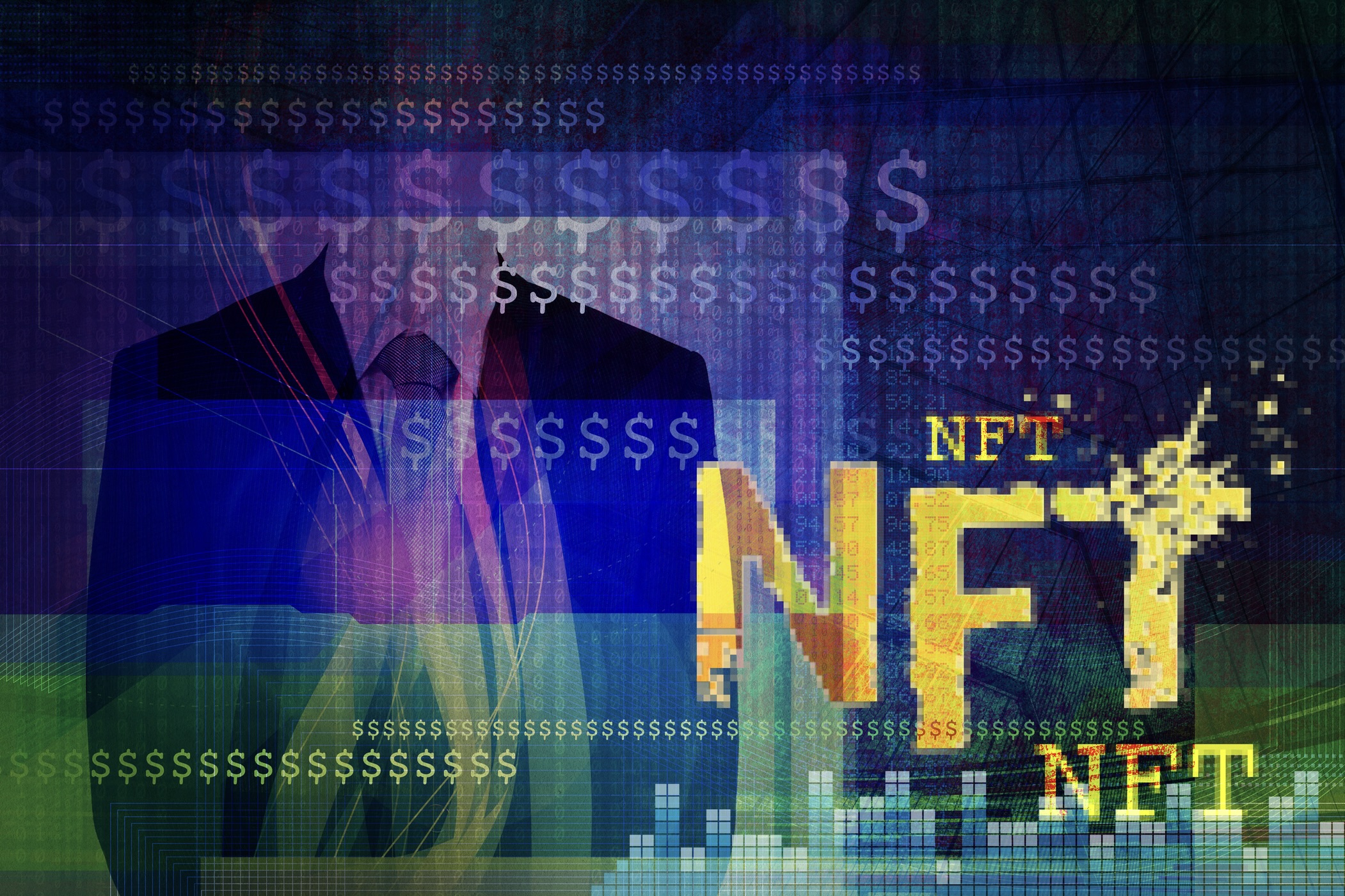Should NFTs Be Considered a Security?

By: Sarkis Yeretsian
If you had asked the author of this post 10 years ago whether he would believe that people would pay thousands upon thousands of dollars for what is essentially a PDF, he would have said you were speaking utter nonsense. However, here we stand, in an era where you cannot go a day without hearing about the latest NFT (non-fungible token) project or the next surefire “To The Moon” cryptocurrency. And, as is tradition, the more notoriety something gets, the more scrutiny it comes under – by attorneys hoping to revolutionize the legal landscape and by governmental entities like the U.S. Securities and Exchange Commissions (SEC).
Readers may be familiar with the popular NFT set known as the Bored Ape Yacht Club (BAYC), founded by Yuga Labs. BAYC is arguably one of the most popular NFTs available for purchase, with certain individual tokens going for as much as $2.6 million dollars. The BAYC tokens are essentially different variations of a cartoon chimpanzee – sometimes in different colors, with different accessories (and some even shooting lasers out of their eyes). BAYC is so immensely popular, that the brand has even procured the public endorsements of famous celebrities such as Eminem, Madonna, Gwyneth Paltrow, Jimmy Fallon, and Paris Hilton.
As previously mentioned, with great popularity comes great scrutiny. BAYC is currently under threat of suit by a plaintiffs law firm mirroring allegations made by the SEC – namely, that NFTs should be considered securities. This interpretation, however, would expose many other similarly situated NFT content creators to large suits and potentially heavy fines from the SEC.
So, What Makes Something a Security?
The SEC relies on the Securities Act of 1933 (Securities Act) and Securities Exchange Act of 1934 (Exchange Act) to determine the definition of a “security.” Section 2(a)(1) of the Securities Act defines a security as:
“…any note, stock, treasury stock, security future, security-based swap, bond, debenture, evidence of indebtedness, certificate of interest or participation in any profit-sharing agreement, collateral-trust certificate, preorganization certificate or subscription, transferable share, investment contract. voting-trust certificate, certificate of deposit for a security, … or, in general, any interest or instrument commonly known as a "security."
Securities of 1933 § 2(a)(1)
While the Acts do not explicitly state “NFTs,” the SEC relies on the use of the term “Investment Contract” to flex its authority and aims to establish an NFT as an Investment Contract under the above definition. To determine whether something should be considered an Investment Contract, we look to the U.S. Supreme Court case of Securities and Exchange Commission v. W. J. Howey Co., which established the “Howey Test.”
The Howey Test
The Howey Test uses three factors to determine whether something falls under the criteria of an Investment Contract. Essentially, an Investment Contract exists where there is (1) an investment of money, (2) into a common enterprise, and (3) there is a reasonable expectation of profits derived from the efforts of others. Howey, 328 U.S. 293 (1946). See also United Housing Found., Inc. v. Forman, 421 U.S. 837 (1975); Tcherepnin v. Knight, 389 U.S. 332 (1967); SEC v. C. M. Joiner Leasing Corp., 320 U.S. 344 (1943).
In the case of NFTs – or, more specifically, BAYC – the first two factors are arguably met easily. Once the token is offered and sold, or acquired for exchange of value, the monetary investment factor could be met. The common enterprise factor can be met because the NFT purchaser’s success is linked to the success of others promoting it and vice versa. However, the SEC’s struggle with establishing NFTs as securities comes down to the third factor: a reasonable expectation of profits derived from the effort of others.
A Reasonable Expectation of Profits From Other’s Efforts
This third factor asks two questions: Does the purchaser reasonably expect to rely on the efforts of an active participant (AP)? And are the efforts of the AP undeniably those that would significantly affect the failure or success of the enterprise?
According to the SEC’s “Framework for ‘Investment Contract’ Analysis of Digital Assets,” an active participant can be a promoter, a sponsor, a third party, or an affiliated group of third parties. If an AP performs essential tasks, creates or supports a market for the price, leads a critical role in its development, makes critical decisions, or the purchasers reasonably expect the AP to undertake efforts to promote its own interest, then those efforts are significant, and a reliance is created.
It is important to note that none of these factors are necessarily determinative, but the presence of more than one of them means a court would be more likely to find the third factor of the Howey Test has been met.
The Celebrity Endorsement & the Third Factor
Let us now discuss the celebrity endorsements – wealthy, beautiful, successful celebrities flaunting their proud collection of purchased or gifted BAYC tokens to the masses. And what happened each time these celebrities posted their trophies? People flocked to purchase these tokens and imitate their icons. However, by posting their tokens on social media platforms and going on late night talk shows promoting their purchases, these celebrities actively support the BAYC market prices. Further, by doing so, they supported the value of their own tokens by making them even more unique than other available NFTs.
Let us look at the average NFT purchaser – likely a day trader with a less sophisticated understanding of the underlying blockchain technology, but an appreciation for a good buy when they see it. Using this example as the reasonable person, we can assume that witnessing famous celebrities purchasing an NFT – which then drives the demand up and, by extension, the price – this reasonable person may expect a similar NFT to do the same. If Paris Hilton or Jimmy Fallon own a BAYC token, and everyone else is purchasing their own BAYC tokens, why should the average person be excluded from enjoying the appreciating asset?
Is It Enough to Meet the Third Factor?
Is all this enough to satisfy the third factor of the Howey Test? So far, several courts throughout the country do not believe so. And while the SEC would like for NFTs to be considered securities for more reasons than one, it is unclear whether the third factor will be found to have been met. Celebrity endorsements could be considered a far cry from performing essential managerial duties, and after an NFT is minted, the transaction is complete and the token functionally, it would seem, cannot be further developed.
The SEC also has stated in its 2019 framework for “Investment Contracts” and digital assets that “Price appreciation resulting solely from external market forces (such as general inflationary trends or the economy) impacting the supply and demand for an underlying asset generally is not considered ‘profit’ under the Howey test.” As of June 2022, the entry level prices of BAYC NFTs have dropped 78% since April 2021. It could appear that not only will the third prong of the Howey Test not be met, but that NFT prices are entwined with what current trends dictate (as evidenced by the sizeable price drop of BAYC NFTs).
In consideration of all of the above, it does not appear that NFTs are yet ready to be considered a security. Currently, NFTs remain out of reach for the SEC, but that does not mean this will be true forever. As the world continues to change, new ideas come to life. As those ideas come to fruition, so too must the law adapt to meet those evolving needs.
For more information on this topic, contact the author of this post. You can also subscribe to this blog to receive email alerts when new posts go up.
